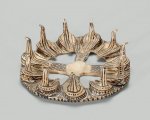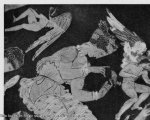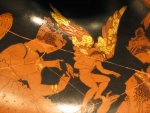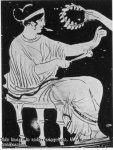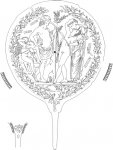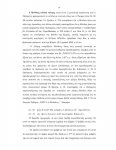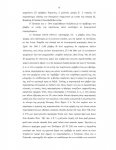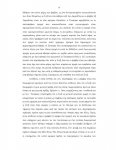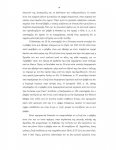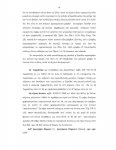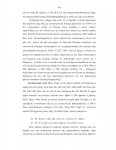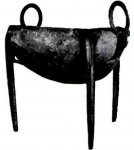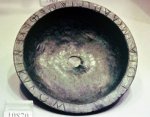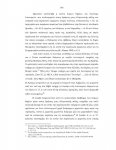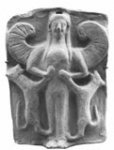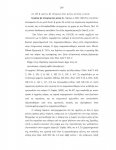Zambelis Spyros
Παλαιό Μέλος
Iynx-wheel. Eleven iynx birds (wry-necks) with folded wings are seated on the rim of a four-spoked wheel. One bird is restored. Linear geometric designs on upper and lower parts of the wheel. On the underside, two groups of ten and twelve apotropaic eyes (leaves), cross-hatching cross-hatched triangles, and checker-board.
Provenance
By date unknown: according to MFA archival card: from Phaleron; by 1928: with Seltman; purchased by MFA from Seltman, March 1, 1928
Greek, Late Geometric Period, 750–700 B.C.
Place of Manufacture
Athens, Attica, Greece
Dimensions
Height: 6.50 cm (2 9/16 in.); diameter: 21.5 cm (8 7/16 in.)
Medium or Technique
Terracotta
Classification
Sculpture
Accession Number
28.49
http://www.mfa.org/collections/object/ritual-object-with-eleven-birds-on-a-wheel-151573
Provenance
By date unknown: according to MFA archival card: from Phaleron; by 1928: with Seltman; purchased by MFA from Seltman, March 1, 1928
Greek, Late Geometric Period, 750–700 B.C.
Place of Manufacture
Athens, Attica, Greece
Dimensions
Height: 6.50 cm (2 9/16 in.); diameter: 21.5 cm (8 7/16 in.)
Medium or Technique
Terracotta
Classification
Sculpture
Accession Number
28.49
http://www.mfa.org/collections/object/ritual-object-with-eleven-birds-on-a-wheel-151573

